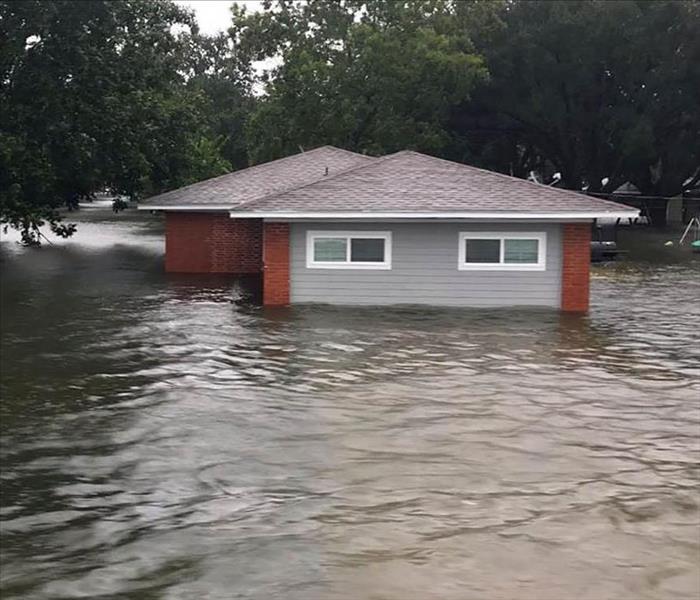5 Steps to Take If Your House Floods
8/13/2020 (Permalink)
Whether due to extreme weather/flooding or a plumbing failure, a flooded house is a serious issue that can have repercussions long after the water recedes. Your first priority during a flood is to get your family to safety, but once the immediate emergency needs are taken care of, it’s time to focus on disaster recovery for your property. To protect your health and safety, below are the first steps to take.
How to Respond to a Flood in Your Home
1. Reduce Additional Risks
Electricity can cause additional dangers when your home floods. Even if the power has gone out, if there’s standing water in your home, you might be at risk for electrocution or fire when the power is restored. If you can safely reach the fusebox and turn off the main power line, then do so. If not, call an electrician for help. If it’s only your home that’s flooded, call the gas and sewer companies as well to shut off those lines to prevent more damage.
2. Avoid Contact With the Water
Even if the floodwaters appear clean, they could be contaminated with bacteria, sewage, or household chemicals that can make you sick. If you must enter your home for cleanup, use proper protective gear, including boots, hip waders, gloves, and masks. Take care when handling any items that have come in contact with the water, and throw away all food that got wet.
3. Take Photos
Before attempting to clean up or make repairs, take photos of the flood and damage. Your insurance company will need them to process your claim, and if you start cleanup before documenting the damage, you could affect your coverage and reimbursements.
4. Contact Your Insurance Company
Notifying your insurer as soon as possible after the flood can help speed your claim and get you on the road to disaster recovery sooner. Follow your insurer’s instructions regarding cleanup or repairs. They may request that you wait until an adjuster examines the damage before starting cleanup. If you are located in a designated disaster area, you may be eligible for additional help and funds from FEMA. Your insurance company will help you with that claim.
5. Begin Cleanup & Mitigation
Once your insurer gives the go-ahead, you can begin the process of disaster recovery. Because mold can begin to grow within 24 to 48 hours of a flood, it’s best to get professional assistance with cleanup. Without proper mitigation, floods can lead to toxic mold throughout your home, causing significant health risks. Expect to replace any furniture that was saturated, as well as carpeting and drywall.





 24/7 Emergency Service
24/7 Emergency Service
